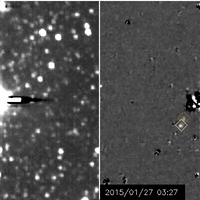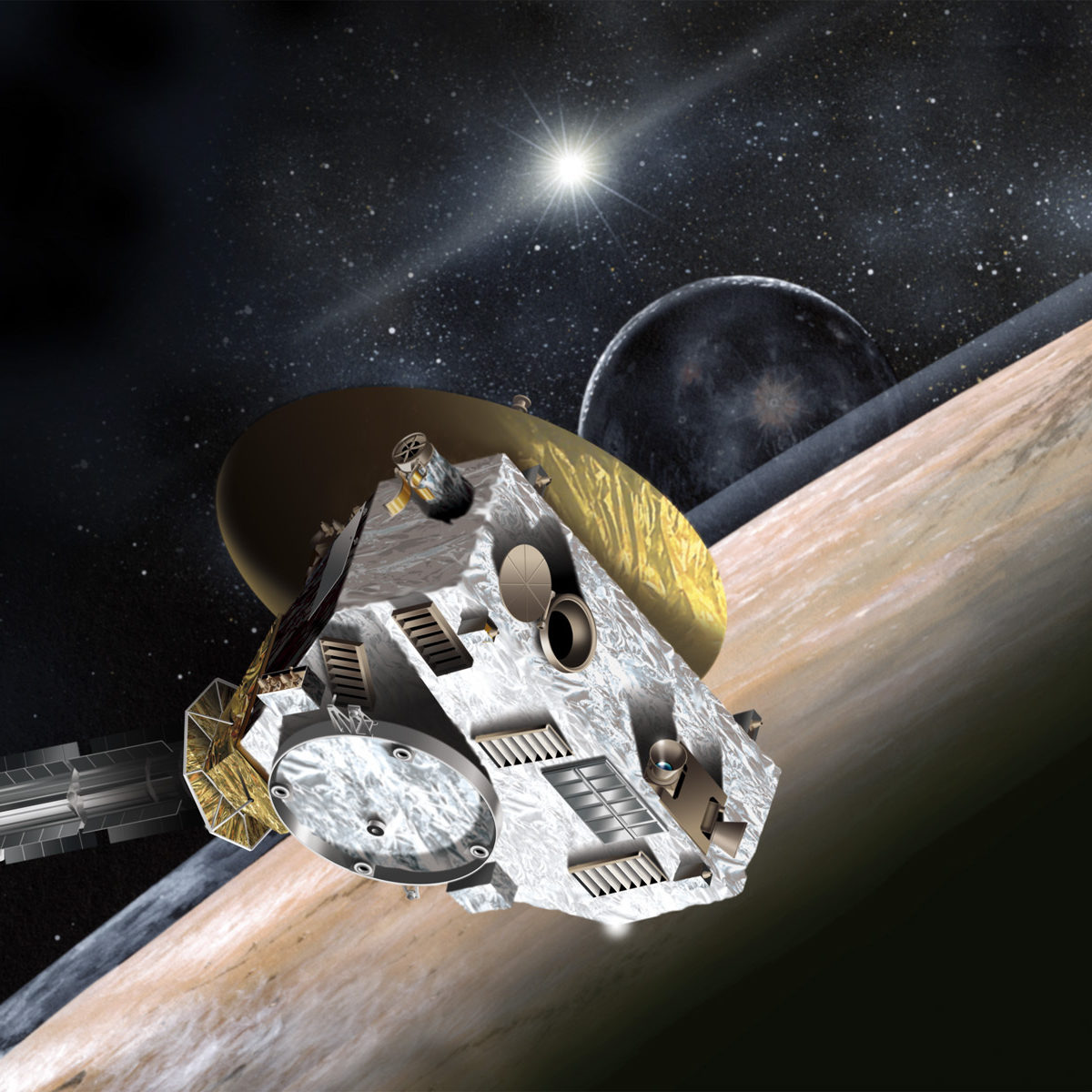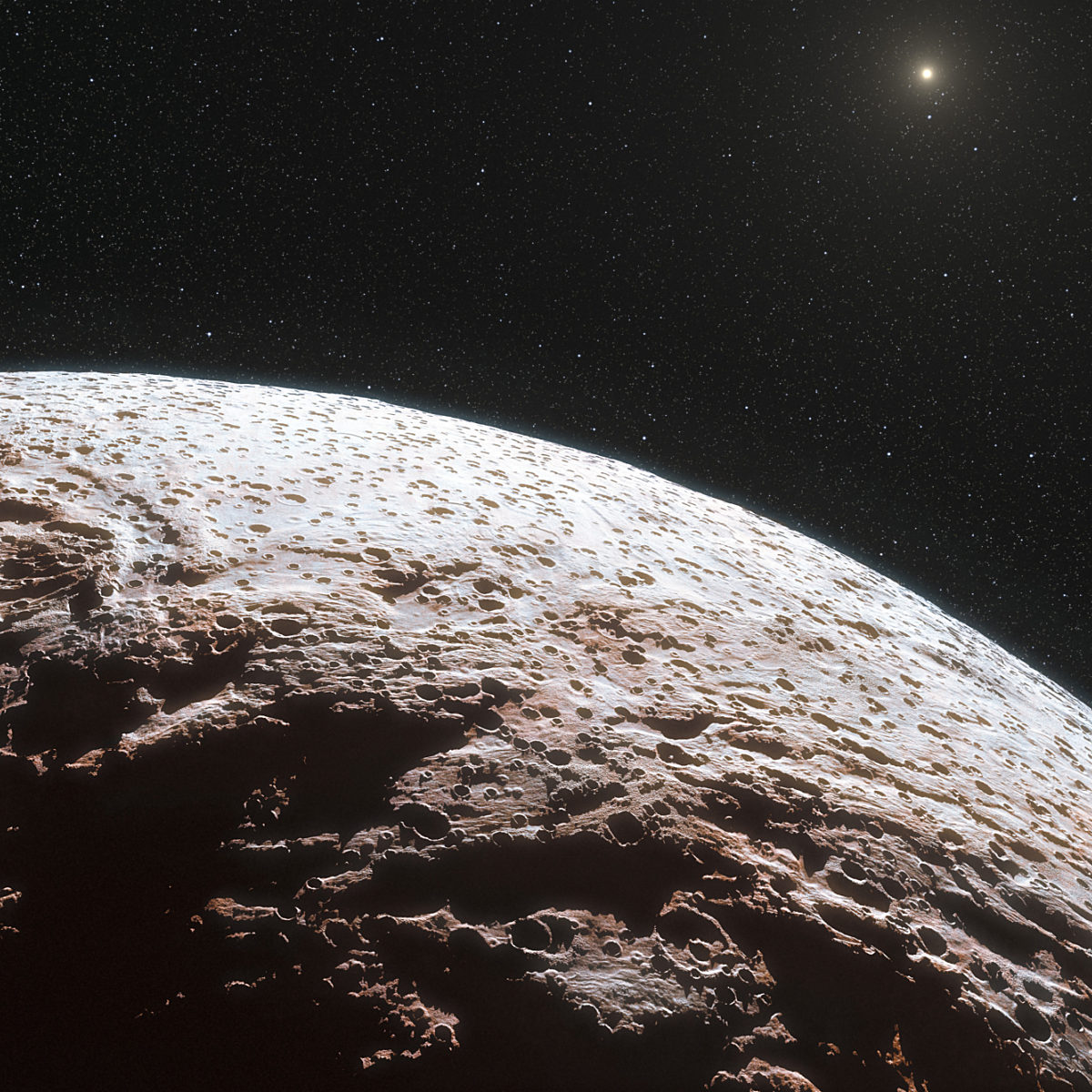All
All
Stories, updates, insights, and original analysis from The Planetary Society.
What Color Does the Internet Think Pluto Is?
Astronomers have known for a long time that Pluto’s surface is reddish, so where did the common idea that Pluto is blue come from?
New views of three worlds: Ceres, Pluto, and Charon
New Horizons took its first color photo of Pluto and Charon, while Dawn obtained a 20-frame animation looking down on the north pole of a crescent Ceres.
Ceres Gets Real; Pluto Lurks
Although we are still along way from understanding this fascinating little body, Ceres is finally becoming a real planet with recognizable features! And that's kinda cool.
The Mapping of Pluto Begins Today
When New Horizons flies past Pluto in July, we will see a new, alien landscape in stark detail. At that point, we will have a lot to talk about. The only way we can talk about it is if those features, whatever they turn out to be, have names.
What to expect when you're expecting a flyby: Planning your July around New Horizons' Pluto pictures
As New Horizons approaches Pluto, when will the images get good? In this explainer, I tell you what images will be coming down from Pluto, when. Mark your calendars!
Pluto Science, on the Surface
New Horizons' Principal Investigator Alan Stern gives an update on the mission's progress toward Pluto.
New Horizons spots Nix and Hydra circling Pluto and Charon
A series of images just sent to Earth from New Horizons clearly shows Pluto's moons Nix and Hydra orbiting the Pluto-Charon binary.
New Horizons returns first images from mission's Pluto approach phase
Here they are, the first images of Pluto from the approach phase of the New Horizons mission. Science has begun; we're on the home stretch!
Year of the 'Dwarves': Ceres and Pluto Get Their Due
This year we achieve the first exploration of these curious but fascinating objects. Paul Schenk explains what we may learn about them.
New camera improves a California near-Earth asteroid program
A new camera is improving the efficiency of the Near-Earth Asteroid Program at the Center for Solar System Studies. This update from Shoemaker NEO Grant winner Bob Stephens reveals amazing recent progress using his 2013 Planetary Society grant.
With New Horizons Ready to Wake Up, Scientists Prepare for Pluto Encounter
When New Horizons wakes up for the final time on Dec. 6, scientists will spend six weeks preparing for the start of the spacecraft's Pluto encounter.
Finally! New Horizons has a second target
What a huge relief: there is finally a place for New Horizons to visit beyond Pluto. A team of researchers led by John Spencer has discovered three possible targets, all in the Cold Classical part of the Kuiper belt. One is particularly easy to reach. New Horizons would fly past the 30-45-kilometer object in January 2019.
Twinkling worlds in motion: New Horizons' first optical navigation images of Pluto and Charon
What's that in the distance? A binary star? Those are two little round worlds dancing in circles, whirling around a point in space located between the two of them. It's Pluto and Charon, clearly separated by New Horizons' camera.
New Horizons to take new photos of Pluto and Charon, beginning optical navigation campaign
Technically, Pluto science observations don't begin for New Horizons until 2015, but the spacecraft will take a series of photos of Pluto and Charon from July 20 to 27 as it begins the first of four optical navigation campaigns.
Hubble to the rescue! The last-ditch effort to discover a Kuiper belt target for New Horizons
Will New Horizons have a mission after Pluto? Ground-based searches have failed to turn up anything that New Horizons can reach. Now Hubble is joining the search, but time is running out: a discovery must be made within the next two months.
Will we find signs of tectonics on Pluto? And what would that mean?
Joseph O’Rourke summarizes a recently submitted paper on tectonic activity on Pluto after the Charon-forming impact.
New Horizons: Updates From the April 2014 Science Team Meeting
New Horizons team member Simon Porter reports on the state of the mission and Pluto system science from the recent science team meeting at the Applied Physics Laboratory.
When will we know which is bigger, Pluto or Eris?
We don't currently know whether Pluto is the biggest thing in the Kuiper belt or not. When will New Horizons give us the answer?
This is the post where you can comment about the IAU planet definition
An attempt to corral the discussion of the IAU planet definition in one place on planetary.org, so that we may be free to actually discuss Kuiper belt observations and scientific results on posts elsewhere on this site.
More excitement in the outermost solar system: 2013 FY27, a new dwarf planet
On the heels of last weeks reports of a second Sedna and a ringed Centaur comes a third cool outer solar system discovery: A new, likely large member of the Kuiper belt. With an absolute magnitude of about 3.0, the new object currently known as 2013 FY27 is the tenth brightest object beyond Neptune .


 Explore Worlds
Explore Worlds Find Life
Find Life Defend Earth
Defend Earth


 Sun
Sun Mercury
Mercury Venus
Venus Earth
Earth Mars
Mars Jupiter
Jupiter Saturn
Saturn Uranus
Uranus Neptune
Neptune Small Bodies
Small Bodies
















